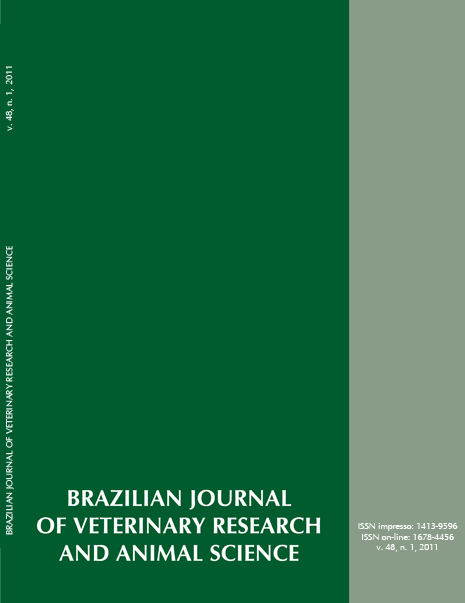Enteric bacteria in water samples and marine shrimp Litopenaeus vannamei cultured in the state of Ceará, Brazil
DOI:
https://doi.org/10.11606/S1413-95962011000100006Keywords:
Enteric bacteria, Water, ShrimpAbstract
Samples of water (n = 28) and Litopenaeus vannamei (n = 28) from two shrimp farms in Ceará state, Brazil were evaluated for total coliforms (TC), total thermotolerant coliforms (TTC), coliform species diversity and Salmonella. No water sample presented TTC levels above the maximum level (2,500 MPN/100 mL) established by regulation for brackish water aquaculture producing seafood for human consumption. The most probable number (MPN) of TTC in shrimp samples ranged from <3 to 2.9 x 10(4) CFU/g. The coliform species most frequently isolated from water and shrimp was Escherichia coli. Only three (5.35%) of the 56 samples tested were positive for Salmonella (Newport and Saintpaul serovars). In spite of the low TTC levels observed, the presence of potentially pathogenic enteric bacteria in shrimp culture is a disquieting finding.Downloads
Download data is not yet available.
Downloads
Published
2011-02-01
Issue
Section
UNDEFINIED
License
The journal content is authorized under the Creative Commons BY-NC-SA license (summary of the license: https://
How to Cite
1.
Parente LS, Costa RA, Vieira GHF, Reis EMF dos, Hofer E, Fonteles AA, et al. Enteric bacteria in water samples and marine shrimp Litopenaeus vannamei cultured in the state of Ceará, Brazil. Braz. J. Vet. Res. Anim. Sci. [Internet]. 2011 Feb. 1 [cited 2024 Apr. 26];48(1):46-53. Available from: https://revistas.usp.br/bjvras/article/view/34375





